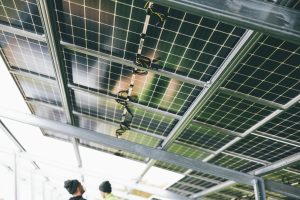Latency Colonization: Why Arctic Data Centers Are Booming
The world is witnessing a data explosion, with the internet becoming a central part of our lives and businesses. The staggering amount of data generated every day has led to the increasing demand for data centers. Traditionally, data centers have been built in locations with suitable climatic conditions and access to power sources. However, there has been a recent rise in the trend of building data centers in the Arctic region. This phenomenon, known as latency colonization, has sparked much interest and debate in the tech world. In this article, we will explore the reasons behind the growing popularity of Arctic data centers and their impact on the tech industry. 
What is Latency Colonization?
Latency colonization refers to the process of setting up data centers in remote, cold regions like the Arctic. Data centers require massive amounts of energy to keep the servers cool, and colder climates provide a natural cooling solution. In the past, data centers were primarily located in warmer regions, leading to high energy costs for cooling. However, the trend is gradually shifting towards colder regions, specifically the Arctic, to reduce energy consumption and costs.
The Appeal of Arctic Data Centers
One of the primary reasons for the growing popularity of Arctic data centers is the ideal climatic conditions. The Arctic temperatures usually range from -20°C to -30°C, which makes it an ideal location for keeping servers cool. This helps reduce the energy consumption of the data center, resulting in cost savings. Moreover, the colder climate also reduces the risk of system failures caused by overheating, ensuring uninterrupted data processing.
Another significant advantage of Arctic data centers is their accessibility to renewable energy sources. Traditional data centers rely heavily on non-renewable energy sources like coal, oil, and natural gas, which contribute to carbon emissions. In contrast, Arctic data centers have access to clean energy sources like hydro, solar, and wind power. This helps reduce the carbon footprint of the data center, making it more environmentally friendly.
Factors Driving the Growth of Arctic Data Centers
Reduced Latency
Latency is the amount of time it takes for data to travel from one point to another. With the increasing use of online services, especially real-time applications like video conferencing and gaming, low latency is paramount. Arctic data centers have an advantage in this aspect, with the physical distance between the Arctic region and major cities being significantly shorter compared to traditional data center locations. This helps reduce the latency, providing a better user experience and improving the overall performance of the applications.
Data Privacy and Security
The Arctic region is home to countries like Norway, Sweden, and Iceland, which have strict data privacy laws. This makes it an attractive location for businesses that handle sensitive data and are concerned about data privacy and security. The stringent regulations and remote location ensure a high level of data privacy, making Arctic data centers a more secure option for businesses.
Cost Savings
The operating costs of data centers are significant, with energy costs being a major expense. The colder climate of the Arctic region helps reduce the energy consumption, resulting in significant cost savings. Moreover, Arctic data centers can also take advantage of government subsidies and tax incentives, making them more cost-effective to operate.
The Impact of Arctic Data Centers
The trend of setting up data centers in the Arctic has the potential to disrupt the tech industry in various ways. Firstly, it provides an alternative to traditional data center locations, reducing the strain on these hotspots and helping distribute the burden. Secondly, it helps reduce carbon emissions, contributing towards a greener and more sustainable future. Lastly, it paves the way for further technological advancements, as the demand for faster and more efficient data processing and transfer continues to grow.
Challenges and Concerns
While Arctic data centers offer many benefits, there are also challenges and concerns that need to be addressed. One of the major concerns is the remote location, which can make it challenging to maintain the data center and ensure a steady supply of resources. Additionally, extreme weather conditions, like snowstorms, can disrupt operations and cause downtime, making it crucial to have contingency plans in place.
In conclusion, Arctic data centers are emerging as an attractive option for businesses due to their ideal climatic conditions, access to renewable energy sources, reduced latency, and cost savings. However, while the trend of latency colonization offers many advantages, it also comes with its set of challenges that need to be carefully addressed. As technology continues to evolve, we can expect to see further advancements in the field of Arctic data centers, making them an indispensable part of the tech world.











